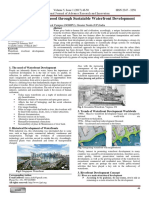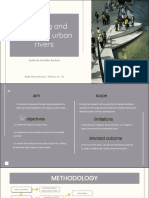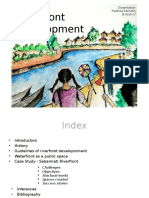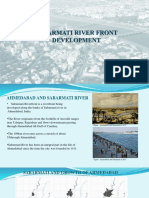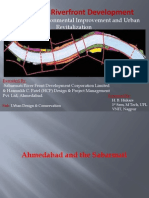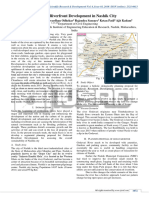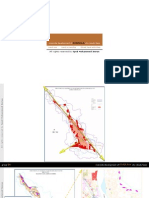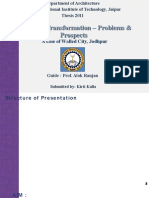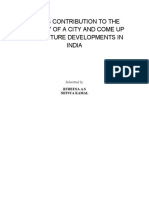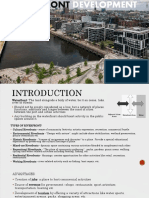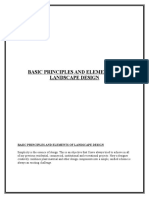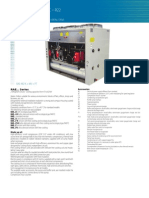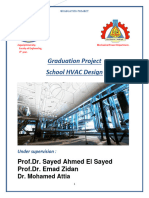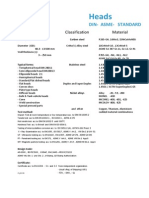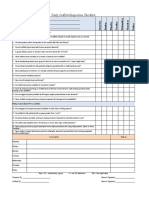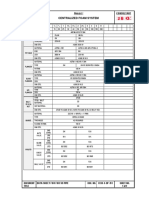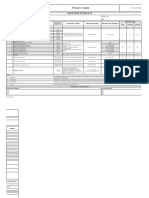0% found this document useful (0 votes)
360 views23 pagesRiver Front Development.2 - 011544
The document discusses the regeneration of waterfront development in Tirur, Kerala. It outlines the objectives of studying waterfront development projects in India, restoring riverfronts, learning from case studies, and addressing issues in the study area. The methodology involves introducing riverfront development, collecting data, case studies, site visits, and reaching a conclusion. Key points covered include defining riverfront development, guidelines for the concept, types of waterfronts, trends worldwide, and elements of successful waterfront projects. The overall aim is to explore the importance of waterfront development for urban areas using Tirur as a case study.
Uploaded by
Anaz AnazCopyright
© © All Rights Reserved
We take content rights seriously. If you suspect this is your content, claim it here.
Available Formats
Download as PDF, TXT or read online on Scribd
0% found this document useful (0 votes)
360 views23 pagesRiver Front Development.2 - 011544
The document discusses the regeneration of waterfront development in Tirur, Kerala. It outlines the objectives of studying waterfront development projects in India, restoring riverfronts, learning from case studies, and addressing issues in the study area. The methodology involves introducing riverfront development, collecting data, case studies, site visits, and reaching a conclusion. Key points covered include defining riverfront development, guidelines for the concept, types of waterfronts, trends worldwide, and elements of successful waterfront projects. The overall aim is to explore the importance of waterfront development for urban areas using Tirur as a case study.
Uploaded by
Anaz AnazCopyright
© © All Rights Reserved
We take content rights seriously. If you suspect this is your content, claim it here.
Available Formats
Download as PDF, TXT or read online on Scribd
/ 23




